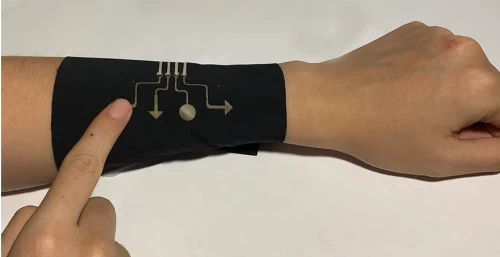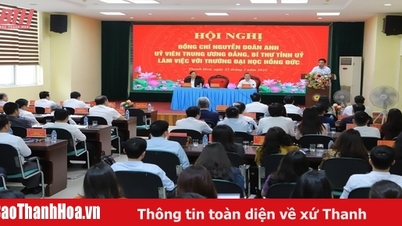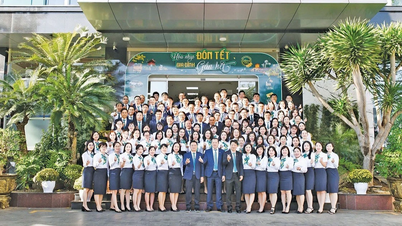According to the Chinese research team, the material they developed has the ability to convert heat energy into electricity (thermoelectric material), which is likely to outperform the performance of other plastic materials currently on the market.
Published recently in the journal Nature , the research was carried out by a team of scientists at the Institute of Chemistry (under the Chinese Academy of Sciences) in collaboration with colleagues at Beihang University (Beijing University of Aeronautics and Astronautics) and other research institutes.
 |
| Breathable electronic materials make wearables more comfortable. (Source: newatlas.com) |
According to scientist Di Trung An - a member of the team, many types of conductive polymers can act as thermoelectric materials.
When a temperature gradient is created across these materials, an electromotive force can be generated between the two ends of the material.
Temperature gradient is a physical quantity that describes the direction of the fastest rate of temperature change around a location and the magnitude of this fastest rate of temperature change.
Electromotive force, also known as electromotive force, is a physical quantity that characterizes the ability of an electric source to produce work.
When an electrical circuit is established across these materials and a voltage is applied, a temperature gradient is also created between the two ends of the material.
This phenomenon opens up the possibility of using lightweight and flexible plastics to create thermoelectricity, paving the way for research into wearable and adhesive electronics and temperature-regulating clothing.
Source: https://baoquocte.vn/tim-ra-vat-lieu-nhua-co-kha-nang-chuyen-hoa-nhet-nang-sang-dien-nang-vuot-troi-280484.html






![[Photo] Thousands of Buddhists wait to worship Buddha's relics in Binh Chanh district](https://vphoto.vietnam.vn/thumb/1200x675/vietnam/resource/IMAGE/2025/5/3/e25a3fc76a6b41a5ac5ddb93627f4a7a)





























































































Comment (0)